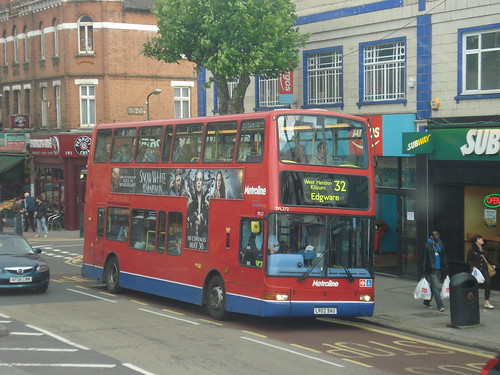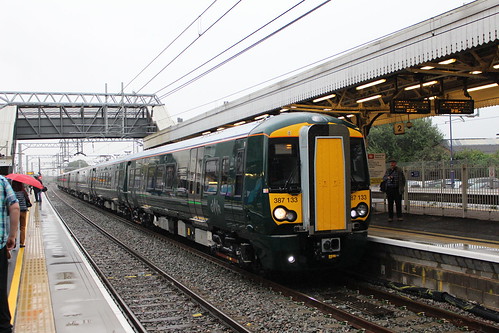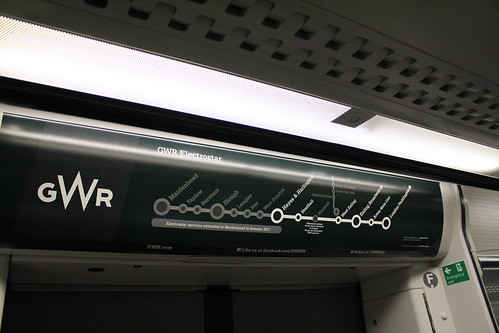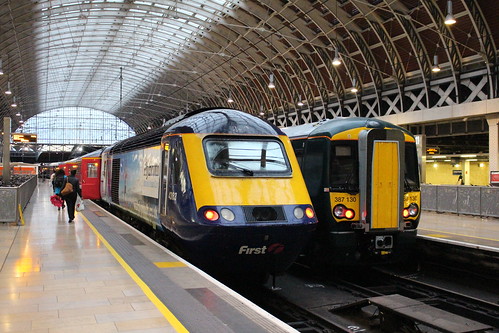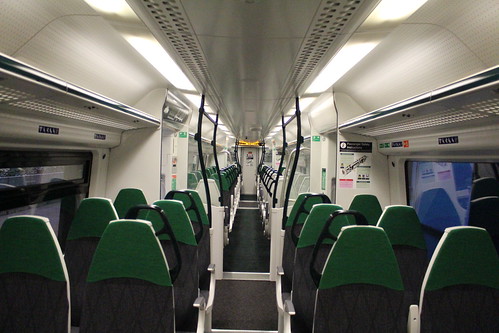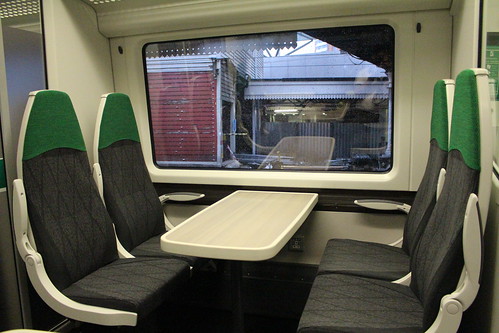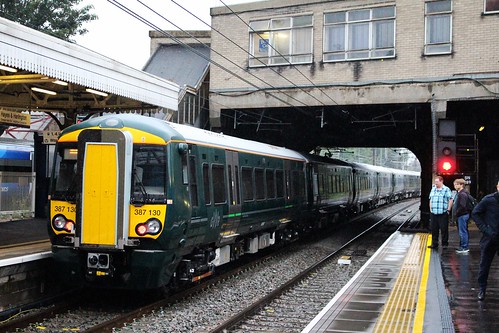Reading Buses, already having made a prominent name for themselves in the UK gas bus market, have decided to step up their game from the Alexander-Dennis Enviro 300-bodied Scania K270UB CNGs currently forming the majority of their single decker fleet. And they've done this using none other than ADL's new contraption: the Alexander-Dennis Enviro 400MMC-bodied Scania N280UD CNG. Well, not at first...
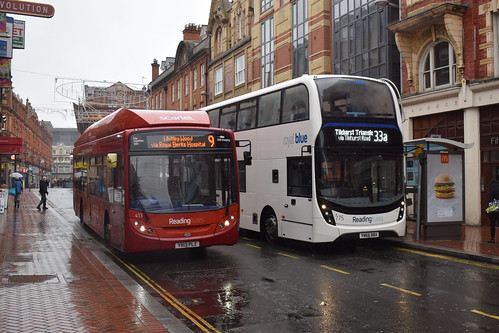
Oh look, both types of ADL/Scania buses managed to make it into the picture! E300/K270UB 413/YR13PLZ working a 9 to Whitley Wood passes new E400MMC/N250UD 775/YN65BBX dropping off passengers after having worked a 33 from Turnhams Farm (© Omar)
Although only temporary place holders for the actual Royal Blue Scanias(which are being built), the white batch of Scania MMCs are deployed on Royal Blue routes 33(Reading Station - Turnhams Farm) and 33a(Reading Station - Tilehurst Triangle). They are currently running alongside the 2 ex-Claret MMCs that have been repainted into Royal Blue livery, 756/YX64VRR and 757/YX64VRT, and Reading's spare fleet. This was done to replace the Scania N230UD/Optare Olympuses on the route.
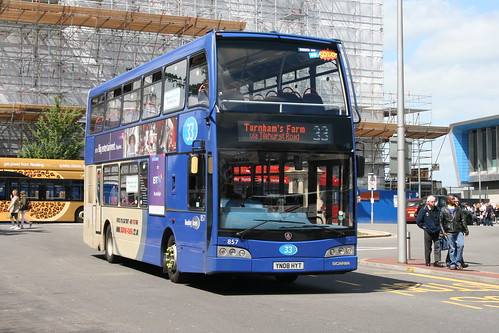
Reading Buses 857 on Route 33, Reading Station (© Aubrey)
Nevertheless, the white Scania MMCs should be an indication of the hopefully permanent order of yet another batch of Scania MMCs that are actually painted in blue for the 33 and 33a. These MMCs do not feature the typical Reading Buses extras(charging points and announcements), alluding to the fact that they are indeed only temporary.
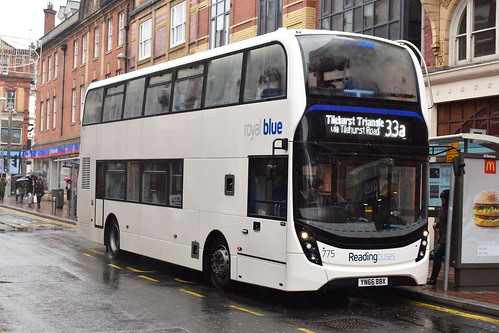
775/YN66BBX dropping off passengers on Station Street ready to work a 33a to Tilehurst Triangle (© Omar)
And yes, I did get a video this time:
Having tried two of these, I must say I am genuinely impressed by them. The ride quality is smooth and sturdy, as one would expect from a Scania. They sound largely the same as Euro 5 Scanias, but have the rather lovely howl of the diff(as shown by my video). It's rather safe to say that ADL and Scania have continued on and set a new modern standard from the E300/K270UB CNG to the E400MMC/N250UD(and hopefully the E400MMC/N280UD-CNG combo), and it's not hard to notice the significant difference in quality from the Euro 4 and 5 equivalents of the chassis to the current Euro 6 variant. As I would say personally, top job Scania!
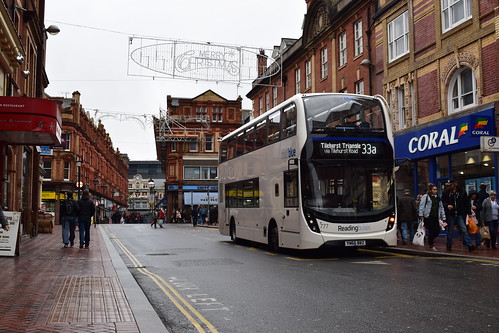
And to round off the post, here's one of my personal favourite shots from the day. 777/YN66BBZ drops off passengers at Reading, Station Street having just worked a 33 from Turnhams Farm, ready for its next run, a 33a to Tilehurst Triangle. © Omar

Oh look, both types of ADL/Scania buses managed to make it into the picture! E300/K270UB 413/YR13PLZ working a 9 to Whitley Wood passes new E400MMC/N250UD 775/YN65BBX dropping off passengers after having worked a 33 from Turnhams Farm (© Omar)
Although only temporary place holders for the actual Royal Blue Scanias(which are being built), the white batch of Scania MMCs are deployed on Royal Blue routes 33(Reading Station - Turnhams Farm) and 33a(Reading Station - Tilehurst Triangle). They are currently running alongside the 2 ex-Claret MMCs that have been repainted into Royal Blue livery, 756/YX64VRR and 757/YX64VRT, and Reading's spare fleet. This was done to replace the Scania N230UD/Optare Olympuses on the route.

Reading Buses 857 on Route 33, Reading Station (© Aubrey)
Nevertheless, the white Scania MMCs should be an indication of the hopefully permanent order of yet another batch of Scania MMCs that are actually painted in blue for the 33 and 33a. These MMCs do not feature the typical Reading Buses extras(charging points and announcements), alluding to the fact that they are indeed only temporary.

775/YN66BBX dropping off passengers on Station Street ready to work a 33a to Tilehurst Triangle (© Omar)
And yes, I did get a video this time:
Having tried two of these, I must say I am genuinely impressed by them. The ride quality is smooth and sturdy, as one would expect from a Scania. They sound largely the same as Euro 5 Scanias, but have the rather lovely howl of the diff(as shown by my video). It's rather safe to say that ADL and Scania have continued on and set a new modern standard from the E300/K270UB CNG to the E400MMC/N250UD(and hopefully the E400MMC/N280UD-CNG combo), and it's not hard to notice the significant difference in quality from the Euro 4 and 5 equivalents of the chassis to the current Euro 6 variant. As I would say personally, top job Scania!

And to round off the post, here's one of my personal favourite shots from the day. 777/YN66BBZ drops off passengers at Reading, Station Street having just worked a 33 from Turnhams Farm, ready for its next run, a 33a to Tilehurst Triangle. © Omar

